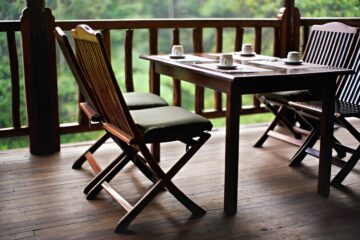Many homeowners mistake security doors for regular fly screens, or vice-versa. They see a mesh and assume protection. This confusion can lead to false security and potential danger. A proper understanding of their differences helps one make wiser choices. But the difference is not cosmetic. It is structural, mechanical, and philosophical.
Let us explore what separates a true security screen door from an ordinary fly screen. First things first—
1. The Essence of Protection
A fly screen exists for comfort. It stops mosquitoes, flies, and insects from entering. Its mission is simple and seasonal. It acts as a breathable barrier during warm months. A security screen door, on the other hand, embodies defense. It resists intrusion, impact, and forced entry. It deters break-ins and offers peace of mind. The purpose defines the design.
Where a fly screen prioritises airflow, a security door prioritises safety. The difference in intent becomes visible in the materials used and the way each product is built. One functions like a soft net. The other stands like a fortress.
2. Material Strength and Composition
Material tells the story of durability. A fly screen usually uses fibreglass mesh or aluminium mesh. Fibreglass is lightweight and flexible. It resists corrosion but tears easily under force. Aluminium is sturdier but can dent with impact. These materials serve homes where insects pose the only threat.
A security screen door transforms this concept. It employs marine-grade stainless steel or heavy-duty aluminium alloy. The mesh is woven tightly, tested for strength, and secured with reinforced frames. Each strand resists cutting, slicing, and prying. The mesh may appear delicate, yet it endures enormous pressure. This engineering gives the door its remarkable resilience.
Some security screens even feature structural-grade perforated aluminium sheets. These sheets maintain ventilation while adding near-impenetrable strength. The material difference alone reveals the intent—comfort versus protection.
3. The Mesh Design
The mesh pattern defines the look and function of both doors. A fly screen mesh features wide openings to maximise airflow. It blocks insects but allows almost everything else through. It offers visibility but zero resistance to force.
The mesh in a security screen door undergoes rigorous testing. It must pass impact, knife shear, and jemmy tests under Australian Standard AS5039. The mesh pattern is dense yet breathable. It prevents not only insects but also intruders from pushing or cutting through. Some designs feature one-way vision mesh, allowing privacy while preserving outward visibility.
The difference feels like comparing silk to chainmail. Both cover the surface, but only one can withstand attack.
4. Locking Mechanisms
Locks transform a simple door into a secure one. Regular fly screens often use basic magnetic or latch closures. These mechanisms serve convenience rather than security. A gentle tug can pull them open.
Security screen doors rely on multi-point locking systems. These locks engage at several points along the frame. They use solid metal bolts and tamper-resistant cylinders. Some models include triple-lock systems, securing the top, middle, and bottom simultaneously.
The lock is not an accessory—it is the core of protection. The precision and strength of a security lock surpass any latch used in a fly screen. The distinction between the two becomes obvious with a single touch.
5. Resistance to Force
When an intruder tests an entry point, strength speaks louder than style. A fly screen cannot resist pressure. A small tool or a firm push tears through its mesh. Its role ends at insect prevention.
A security screen door undergoes impact testing to ensure endurance. It must withstand repeated kicks, heavy strikes, and prying attempts. Manufacturers test each model under standardised conditions to simulate real-world attacks. The results determine its certification.
This resistance makes the security screen door more than an accessory. It transforms it into an active line of defense. The contrast in toughness defines the boundary between vulnerability and safety.
6. Airflow and Ventilation
Both screen types promise ventilation, but they achieve it differently. Fly screens maximise airflow. Their lightweight mesh allows generous passage of air and light.
Security screen doors balance airflow with protection. Their mesh is denser but still breathable. Many designs use micro-perforated metal that allows continuous ventilation without compromising strength.
A well-made security screen provides fresh air even with the main door closed. This combination of safety and ventilation enhances comfort and peace of mind. It lets one enjoy the breeze without sacrificing security.
7. Aesthetic Appeal
Aesthetics shape the home’s first impression. Fly screens usually blend into windows or door frames. Their thin profiles and neutral colours aim for invisibility. They serve a purpose but seldom enhance style.
Modern security screen doors embrace design innovation. They come in powder-coated finishes, elegant colours, and sleek geometric patterns. They complement architectural themes from classic to contemporary. The mesh, though strong, maintains clear visibility. The result is a combination of protection and visual grace.
A security door no longer looks industrial. It reflects modern craftsmanship, turning a point of defense into a feature of beauty.
8. Installation Process
Installation also reflects the difference in purpose. A fly screen can be a weekend project. A homeowner can install or remove it with minimal effort. Clips or Velcro strips often suffice.
A security screen door demands precision. Installation involves custom fitting, professional measurement, and anchoring to structural points. Certified installers ensure that the frame aligns perfectly and the locks engage smoothly. Improper installation weakens the security advantage.
This distinction highlights professionalism. A security screen door is not a casual addition—it is a structural upgrade.
Conclusion
Every home deserves comfort and safety. A fly screen satisfies only one, while a security screen door delivers both. Understanding their difference transforms an everyday purchase into a wise decision.
If you need more clarity on the matter, feel free to talk to Elite Roller Shutter. They will help you choose security that lasts.



